This post may contain affiliate links. Please read our disclosure policy.
If you enjoyed my strawberry mochi recipe, you should also try this mango mochi coated with coconut powder. It has soft and chewy skin kissed with a hint of coconut and a juicy sweet mango on the inside. Make this mochi by steaming the dough, wrapping the filling with mochi dough, and coating it with coconut powder – and you‘re done!
What Is Mango Mochi Coated With Coconut Powder?
Mochi is a signature Japanese dessert that looks like a cute round bun. It is made of glutinous rice flour, which gives it its soft, sticky, and super chewy texture. Aside from glutinous rice flour, the mochi dough is also mixed with other essential ingredients like cornstarch, white sugar, milk, and oil.
This is a popular bite-sized confection for special celebrations, including Japanese New Year, Children’s Day, and Girls’ Day. It comes in various colors since mochi is typically colored with food coloring, such as matcha powder, milk powder, cocoa powder, and purple potato powder. You can enjoy its many filling combinations, such as red bean, taro, strawberry, and peanut.
For this mochi variation, I used mango as the filling and coated the mochi skin with coconut powder. All you have to do is slice your mangoes, steam the mochi dough mixture, and wrap the mangoes with a mochi dough wrapper before coating it with coconut powder. You can finish this recipe in less than an hour!
Why Glutinous Rice Flour Is A Crucial Ingredient
Glutinous rice flour is the main ingredient when it comes to making mochi. The texture of mochi heavily relies on this for its sticky and chewy consistency. Without this special flour, it will only make it slightly chewy without its distinct sticky features.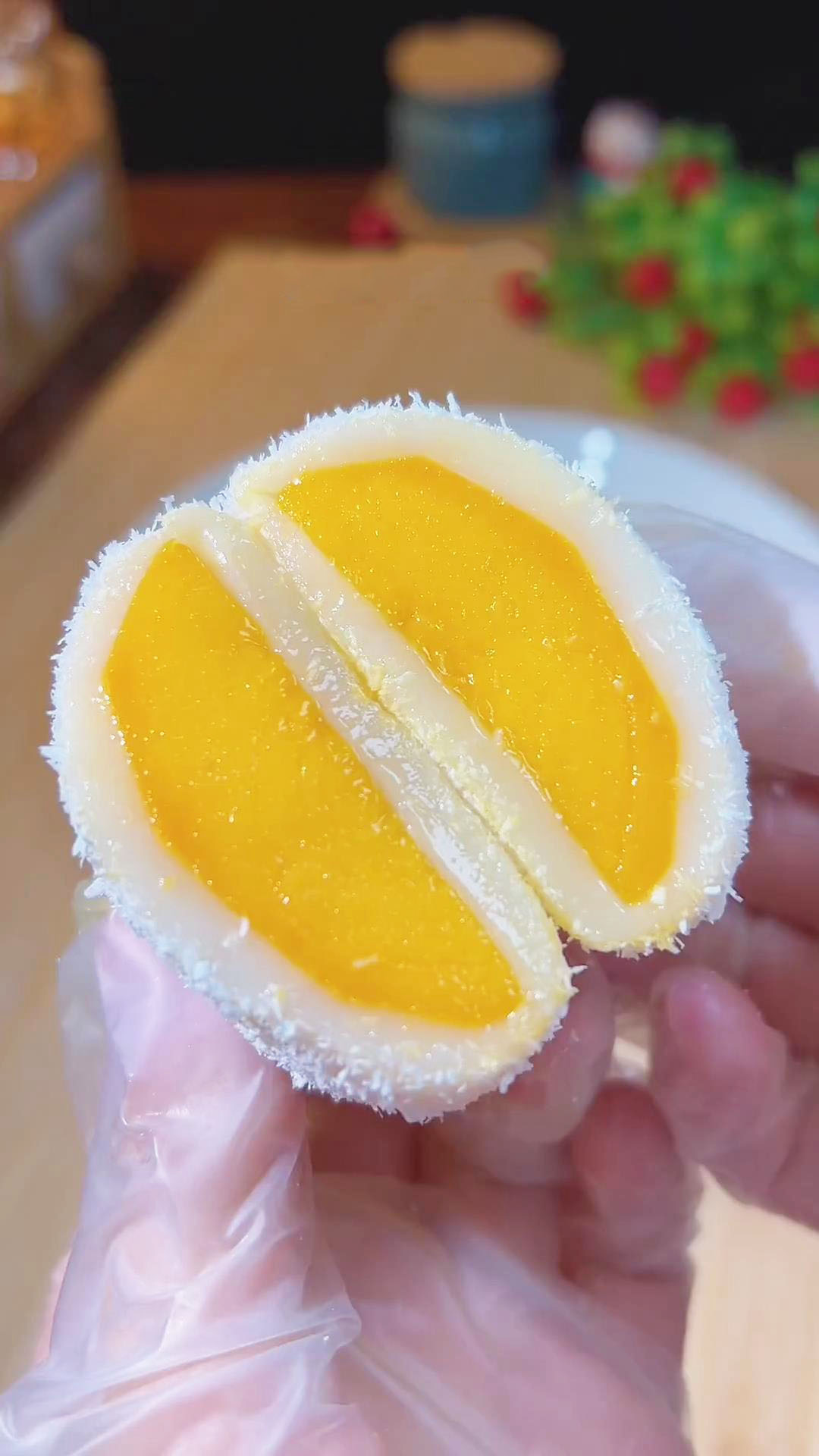
Basically, it should be the kind of very stretchy texture that sticks to your teeth. From the name itself ‘glutinous’, means it should make the mochi glue-like and sticky. Unfortunately, only glutinous rice flour can achieve this, so there are no best alternatives to this.
I recommend preparing this ingredient ahead of time to achieve the most desirable texture. You may come across another type of flour called rice flour; however, this type of flour is different from glutinous rice flour. Rice flour is made from long or medium-grain white rice, such as japonica, sinandomeng, angelica, or indica, and will only give the mochi a slightly chewy texture without the sticky features.
Tips And Suggestions For Mango Mochi
I have made mochi numerous times and have discovered several helpful techniques and ingredient tips to make the perfect mochi. Don’t worry! I am not gatekeeping these secrets and I want to share them with fellow mochi lovers. So, I listed them below for your guidance and help you along the way.
Mochi Dough
- Glutinous rice flour: Please do not remove this from the recipe if you want to create an authentic mochi with a sticky and chewy consistency. I recommend looking for this in Asian grocery stores, online supermarkets, or Amazon and similar platforms. Use your extra glutinous rice flour to make Homemade Ham Sui Gok 咸水角 (Fried Glutinous Rice Dumplings)and Festive Snow Skin Mooncakes.
- Some would try using tapioca starch while adjusting the amount to get a closer chewy texture. However, this still won’t give you the same distinct consistency as glutinous rice flour. Nevertheless, it can be an alternative while you enjoy the sweet mangoes with a chewy dough.
- Cornstarch: In addition to glutinous rice flour, cornstarch adds a chewy and thicker consistency to the dough, To substitute cornstarch, opt for the following alternatives:
- All-Purpose Flour (1:1 ratio)
- Arrowroot Powder (1:1 ratio)
- Tapioca Starch/Flour (1:1 ratio)
- Potato Starch (1:1 ratio)
- Rice Flour (1:1 ratio)
- Sugar: Use white sugar to have a white plain canvas of the mochi. In this way, you can make it easier to add your choice of color when you coat the outer layer of the mochi. If you don’t mind having a tint of brown, you can also use brown sugar, coconut sugar, cane sugar, or muscovado sugar.
- Milk: Giving the dough its creamy and rich texture is a small amount of milk. You can use regular milk or any plant-based milk like soy, oat, or almond. If you like coconut flavors, use coconut milk. Water is also an alternative but it won’t make the mochi creamy or rich like milk.
- Oil: Oil is added after steaming the dough ingredients above. I recommend any neutral-tasting oil such as corn oil, peanut oil, soybean oil, or vegetable oil. Alternatively, you can also use butter and allow it to melt on top of the steamed dough while hot. Adding a bit of oil adds extra moisture and fluffiness.
- Coating: For the last part, the assembled mochi is coated with a thin layer of coconut powder. After all, coconut and mangoes go well together for a summer tropical vibe. Aside from coconut powder, you can also coat the mochi with milk powder, coconut flakes, shredded coconut, purple potato powder, red potato powder, or matcha powder, to name a few.
- Cooking method: I cooked the dough by steaming the mixed glutinous rice flour, cornstarch, sugar, and milk for 30 minutes. After 30 minutes, the mochi dough should solidify and be ready for stretching and shaping. If you don’t have a steamer, you can still steam in 5 ways: pan with steamer rack, microwave, pan with sieve, rice cooker, and instant pot. Steaming is not the only method to cook the dough as you can also cook it by cooking on a frying pan on low heat. If you prefer the pan-frying method, you can follow my recipe on Strawberry Mochi Recipe.
Mango Filling
- Mango: Use fresh, frozen, or canned mangoes. For fresh mangoes, make sure to choose the ones that are already ripe to ensure sweetness. If using frozen, allow it to thaw and remove excess liquid before wrapping it with mochi dough. Slice the mangoes according to your desired size and shape. You can replace mangoes with other fruits of your choice such as strawberry, kiwi, and banana.
- Filling alternatives: Aside from mangoes, add variety to your mochi by using the following fillings:
- Yam paste
- Lotus seed paste
- Purple sweet potato paste
- Black sesame paste
- Taro paste
- Red bean paste
- Matcha bean paste
- Cheesecake
- Mung bean paste
- Ice cream
Prepare These Kitchenware And Ingredients
The best part about creating mochi is that you can make it with just simple kitchen tools you already have at home: a knife, mixing bowl, whisk, and a steaming appliance. If you are not going to steam, use a non-stick pan as an alternative. You will also need the following ingredients:
- 4 Sliced mangoes
- Mochi dough:
- 120g glutinous rice flour
- 40g corn starch
- 30g white sugar
- 160ml milk
- 8g oil
- Coating (coconut powder)
Steps To Make Mango Mochi Coated With Coconut Powder
In a nutshell, the steps are slicing the mangoes, steaming the mochi dough, assembling the dough and mangoes, and coating it with coconut powder. These steps are shown on my Instagram and TikTok reels so you can follow along. Steaming takes only 30 minutes, whereas the rest of the steps depend on how fast you mix and shape the mochi.
- Peel and slice the mangoes.
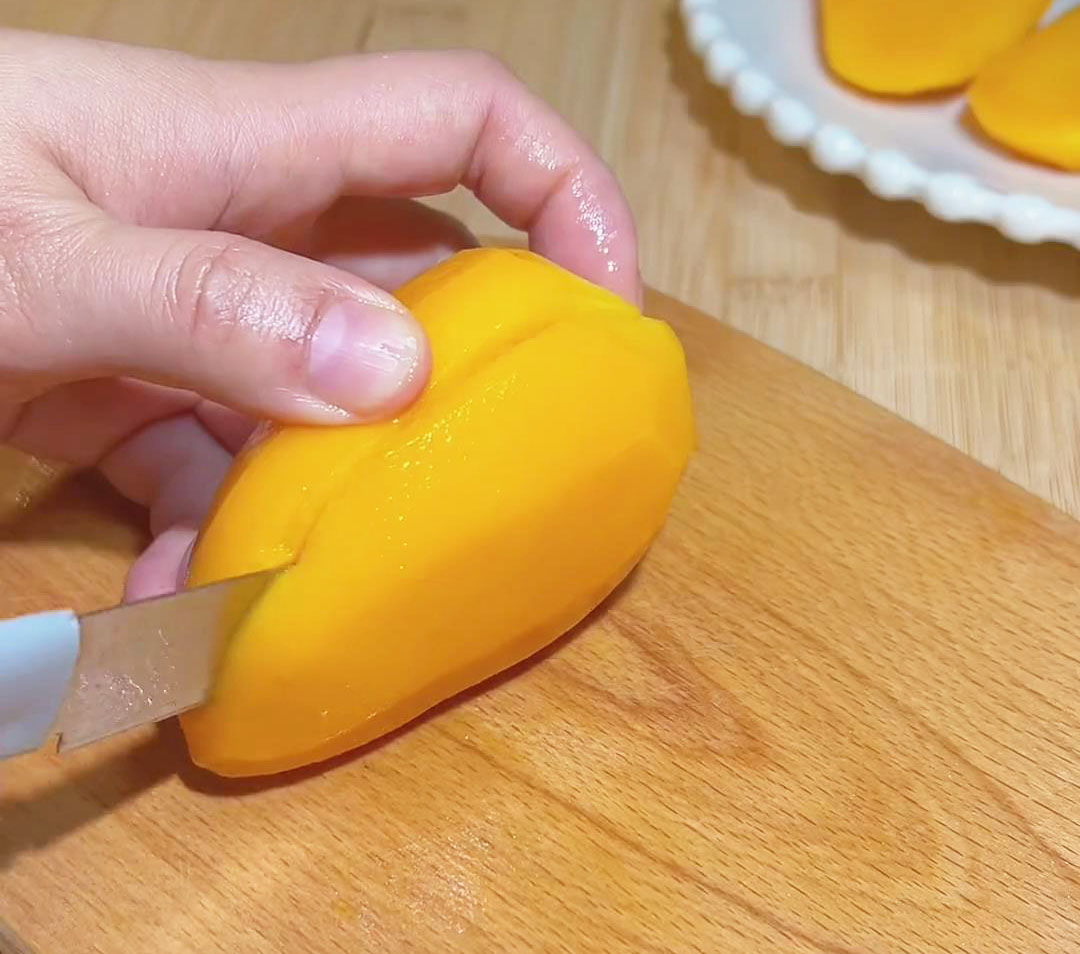
- In a bowl, mix glutinous rice flour, cornstarch, white sugar, and milk to create the mochi batter. Mix it until it’s smooth like yogurt.
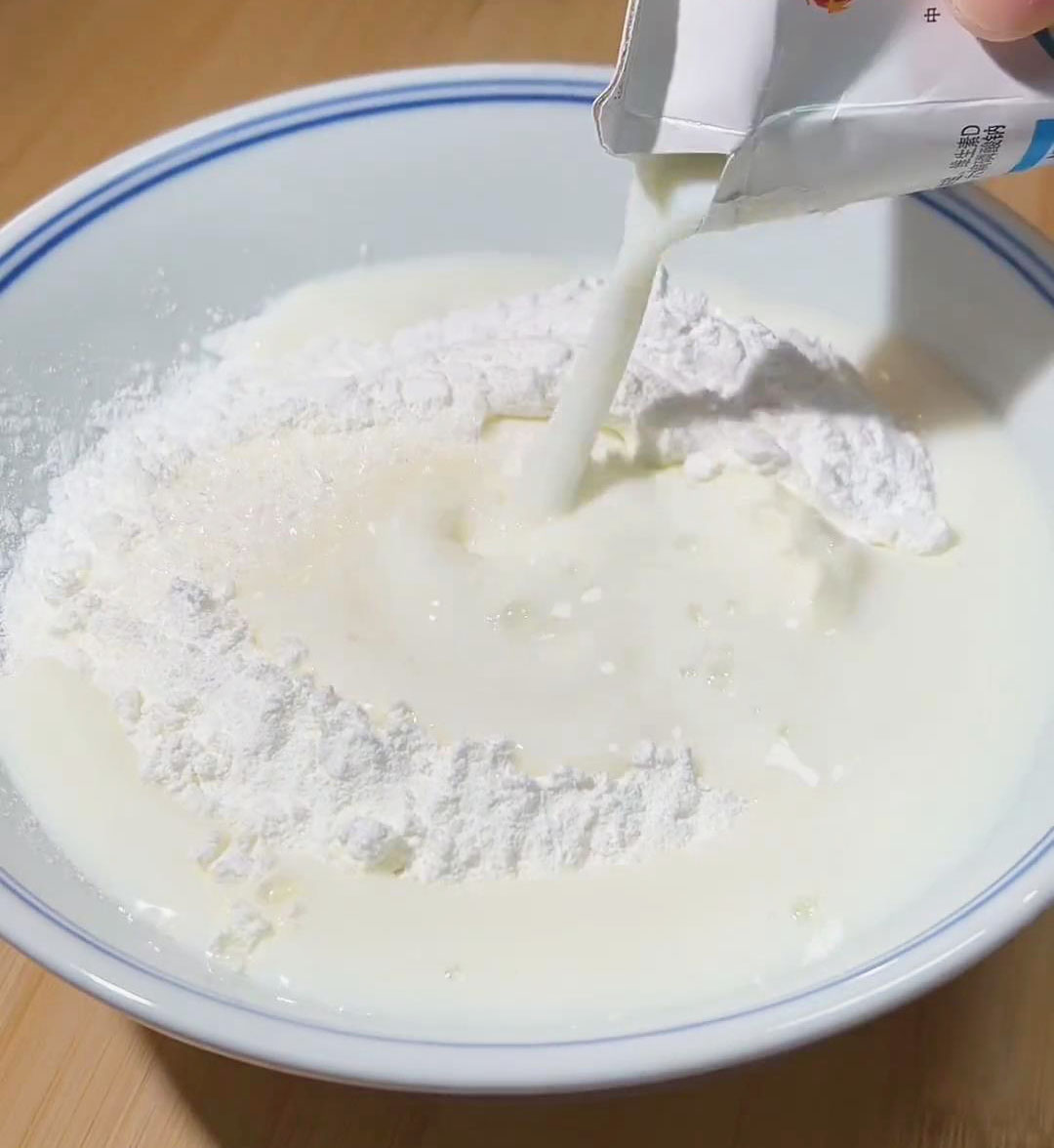

- Then, cover it with plastic wrap and poke the plastic wrap to make tiny holes.
- Steam for 30 minutes. The dough should become semi-solid after steaming.
- After steaming, add corn oil and distribute it evenly in the dough. Remember to wear kitchen gloves.
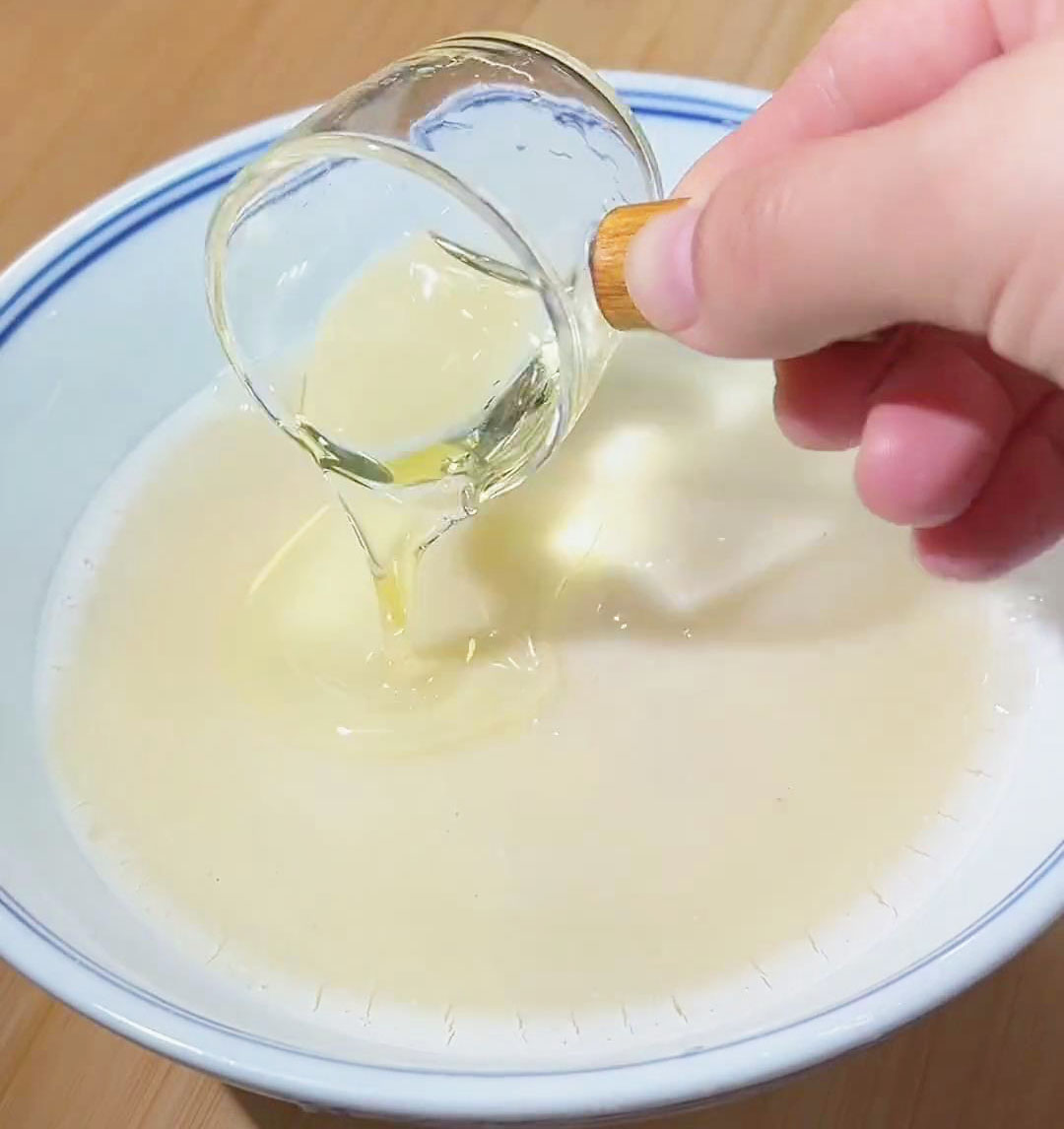
- Keep mixing the dough by twisting and pulling it up with your hands.
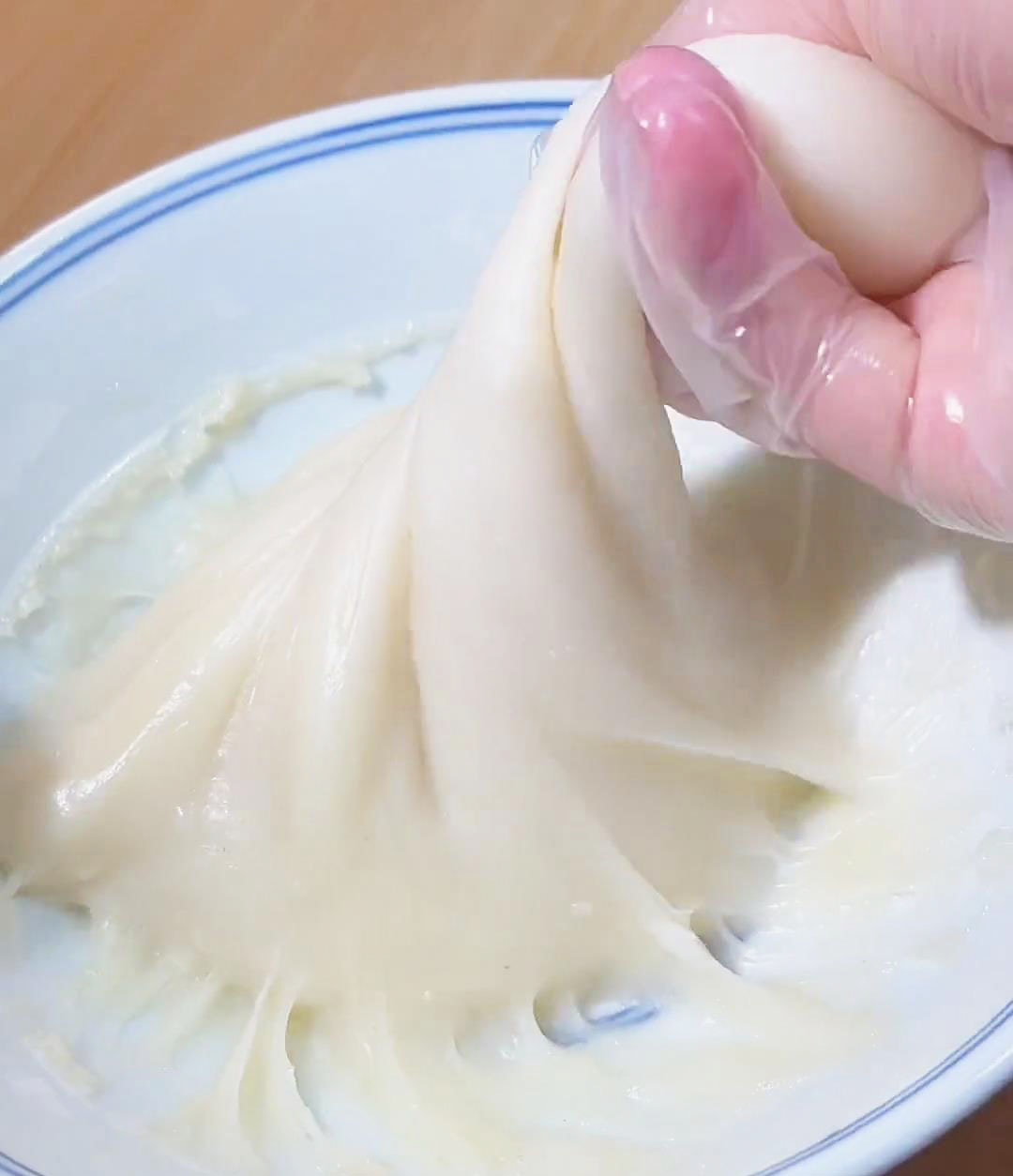
- Take a piece of the dough and flatten it into a circular wrapper.

- Place a slice of mango in the center of the wrapper.

- Pinch the edges to seal it, and shape it nicely into an oval mochi.
- Sprinkle coconut powder on a plate and gently coat the mochi with a layer of coconut powder.

Did you love this mango recipe? If you have some extra mangoes left, here are my recommended mango recipes that’ll surely be a mango feast:
- Thai Mango Sticky Rice Dessert
- Hong Kong Style Mango Pancakes
- Mango Coconut Milk Pudding Dessert
- Mango Pomelo Sago Dessert 楊枝甘露
- Mango Sago Dessert Recipe (Mango Tapioca Pudding)
- Eggless Homemade Mango Pudding
- Fried Prawn & Mango Roll

How To Make Mango Mochi
Ingredients
- 4 Sliced mangoes
Mochi dough:
- 120 g glutinous rice flour
- 40 g corn starch
- 30 g white sugar
- 160 ml milk
- 8 g oil
- Coating coconut powder
Instructions
- Peel and slice the mangoes.
- In a bowl, mix glutinous rice flour, cornstarch, white sugar, and milk to create the mochi batter. Mix it until it's smooth like yogurt.
- Then, cover it with plastic wrap and poke the plastic wrap to make tiny holes.
- Steam for 30 minutes. The dough should become semi-solid after steaming.
- After steaming, add corn oil and distribute it evenly in the dough. Remember to wear kitchen gloves.
- Keep mixing the dough by twisting and pulling it up with your hands.
- Take a piece of the dough and flatten it into a circular wrapper.
- Place a slice of mango in the center of the wrapper.
- Pinch the edges to seal it, and shape it nicely into an oval mochi.
- Sprinkle coconut powder on a plate and gently coat the mochi with a layer of coconut powder.



